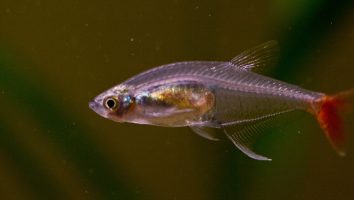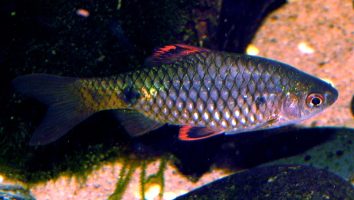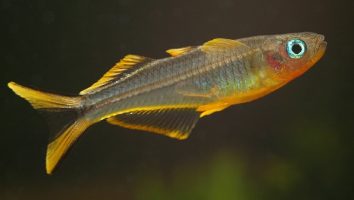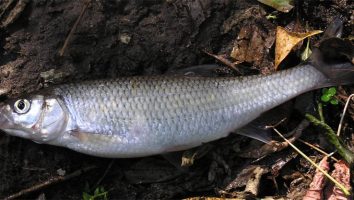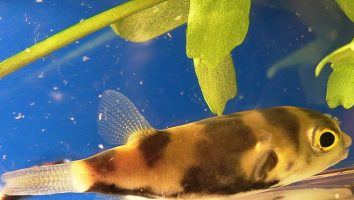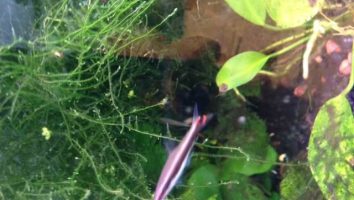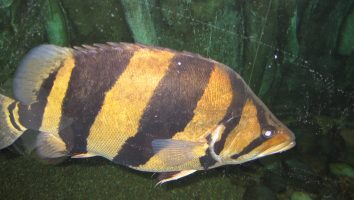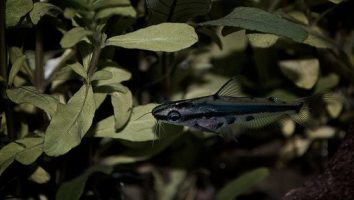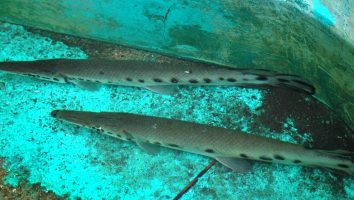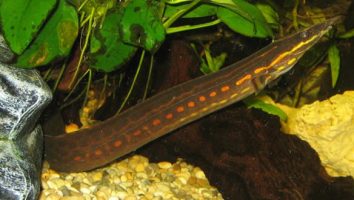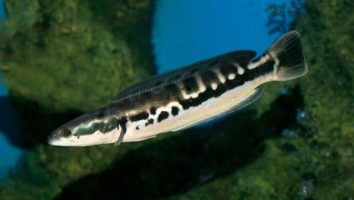The knight goby is an absolutely stunning freshwater fish that is perfect for the beginner aquarist. They’re very easy to care for and have a very peaceful temperament, making them a great addition to any community tank.
In this guide, we’ll teach you everything you need to know about knight goby care. You’ll learn about their diet, tank mates, lifespan, and more!
Table of contents
Species overview
The knight goby (scientific name: Stigmatogobius sadanundio) is a freshwater fish that’s native to Southeast Asia. It’s most commonly found in Thailand, Malaysia, and Indonesia.
This fish prefers to live in still or slow-moving waters with a lot of vegetation. This could be anything from ponds and lakes to rice paddies and slow-moving rivers.
The knight goby is a relatively small fish, only growing to be about 4 inches long at most. Despite their small size, they are fairly aggressive and territorial fish. They are also known to be escape artists, so it’s important to have a tight-fitting lid on their tank.
Overall, the knight goby is a beautiful fish that is a popular choice for many freshwater aquariums.
Appearance
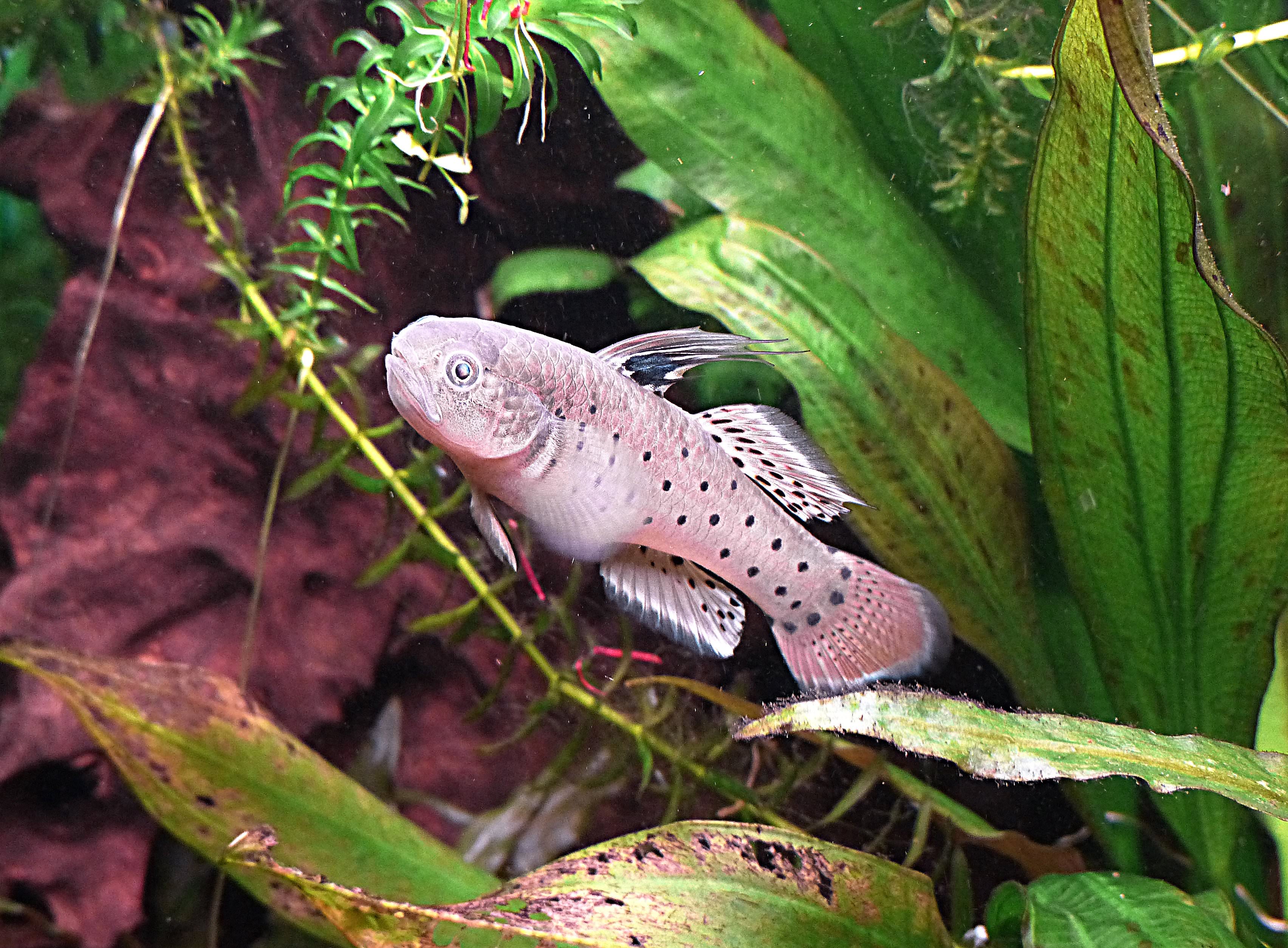
The first thing you’ll notice about the Knight Goby is their unique coloration. These fish are a dark blue on their upper half that fades into a white on their ventral side. There is also a line of white that goes down the center of their body (from their mouth to their caudal peduncle).
This line is very thin and can be hard to see at times. Both the male and female have this line, but it’s more pronounced in males.
The second thing you’ll notice is the long dorsal fin that runs almost the entire length of their body. This dorsal fin is very thin and has 2-3 spines sticking up at the end.
The caudal fin is forked and symmetrical. The anal fin is very small and thin. Both of these fins are also a darker blue color that fades into the white ventral side.
The pectoral fins are a bit larger than the anal fin and are a dark blue color as well.
Knight Gobies have a long and thin body shape that tapers down at the end. They have a small head with large eyes. The mouth is small and located at the end of a long snout.
Lifespan
In the wild, it’s not uncommon for a Knight goby to live for 10 years or more. But in captivity, these fish typically only live for about 5 years.
There are a number of factors that can impact a Knight goby’s lifespan in captivity. Poor water quality, for instance, can lead to a number of health problems that shorten their life.
Stress is also a big factor. If these fish don’t have a hiding place or are constantly harassed by tank mates, their lifespan will be significantly shortened.
Size
The average size of a Knight Goby is between 2 and 3 inches long. Some individual fish may grow to be a little bit larger or smaller than this, but this is the general size range for this species.
Tank
Tank Size
The minimum tank size for a knight goby is 30 gallons. If you want to keep more than one knight goby in the same tank, you’ll need to add at least another 20 gallons for each fish.
As with many other fish on this list, the extra space is not just for the benefit of the fish but also for the enrichment of the environment.
A larger tank will also give you more options when it comes to choosing tank mates.
Water Parameters
The knight goby is a hardy fish that can adapt to a wide range of water parameters. However, it’s important to maintain consistency to keep your fish healthy and stress-free.
Here are a few general guidelines to help you create a knight goby-friendly environment.
- Water temperature: 72 to 82 degrees Fahrenheit
- pH levels: 7.8 to 8.6
- Water hardness: 8 to 12 dGH
- Alkalinity Levels: 3-10 dKH
What To Put In Their Tank
When it comes to setting up an aquarium for a knight goby there are a few key things you need to remember.
The first is that these fish come from brackish waters. This means that you need to use a substrate that can buffer the water and keep it at a stable pH level.
We recommend using something like aragonite sand or crushed coral. These substrates will help keep the water in your tank at the right level of salinity.
The second thing to remember is that these fish like to hide. You’ll need to provide them with plenty of places to do this.
We recommend using a mix of rocks, driftwood, and caves. This will give them plenty of options when it comes to finding a place to hide.
The third thing to remember is that these fish like to swim. You’ll need to provide them with plenty of open space to do this.
We recommend avoiding plants and decorations that take up a lot of space. This will give them the room they need to swim and explore their environment.
Common Diseases
There are a few diseases that you need to look out for when keeping knight gobies. While they are a pretty hardy fish, they are still susceptible to the same illnesses as any other freshwater fish.
The most common disease you’ll need to worry about is ich. This is a parasites that will attach itself to your fish and cause white spots to form on their body.
If left untreated, ich can be fatal. However, it is fairly easy to treat if you catch it early.
The best way to prevent ich (and any other disease) is to maintain clean and stable water conditions in your tank. A well-maintained tank will lead to healthier fish who are less likely to get sick.
Behavior & Temperament
The Knight Goby is a peaceful fish that does well in a community tank. They are not known to be territorial or aggressive and get along well with other fish.
These fish are shy by nature and prefer to stay hidden most of the time. They will often seek out places to hide and will stay there until they feel comfortable enough to come out.
Knight Gobies are known to be good jumpers, so it is important to have a tight fitting lid on your aquarium.
These fish are also known to be escape artists and will find any way possible to get out of the tank.
When it comes to feeding, Knight Gobies are not picky eaters and will accept most types of food.
Tank Mates
When it comes to knight goby tank mates, you have a few options. These fish are relatively peaceful and can get along with most species.
They do best in a community tank with other small fish. Some good knight goby tank mates include:
- Neon Tetras
- Ember Tetras
- Glowlight Tetras
- Guppies
- Mollies
- Platies
- Swords
Breeding
These beautiful little fish are not the easiest to breed in captivity. They’re very particular about their environment and can be quite finicky. Patience is key when attempting to breed them.
The first step is to set up a breeding tank. It should be at least 30 gallons and have plenty of hiding places. Use live plants to help create a natural feel. Driftwood is also a good idea.
The water should be fairly shallow. Aim for a depth of around 6 inches. The temperature should be between 72 and 78 degrees Fahrenheit.
Once the tank is set up, you’ll need to add a pair of Knight Gobies. These fish are very territorial, so it’s best to add a male and female at the same time. That way, they can claim their own territory and avoid fighting.
Give them a few days to adjust to their new home. Then, start feeding them plenty of live foods. Bloodworms and brine shrimp are good options.
When the female is ready to spawn, she’ll lay her eggs on the underside of a rock or piece of driftwood. The male will then fertilize them. Once that’s done, he’ll stay close by to protect them.
The eggs will hatch in about a week. At that point, you can start feeding the fry baby brine shrimp. They’ll need to be fed several times a day.
Conclusion
The Knight Goby is an excellent addition to any aquarium. They’re beautiful fish that are relatively easy to care for and get along well with other community fish.
It’s important to remember that they do require a little bit of extra care when it comes to water quality and diet, but as long as you’re aware of that they’ll be a great addition to your tank.
Overall, we think the Knight Goby is a great choice for any fish owner and would highly recommend them to anyone looking for a new addition to their aquarium.

